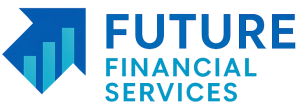To build wealth we must acquire debt
For most of us having debt is normal. In order to build wealth and accumulate assets it is common practice to acquire debt, debt can also occur if we spend more than we earn, either way it is likely for most people to have a level of debt.
Regardless of how the debt was accumulated we need to be mindful of the present and future effect it has on both our cash flow and our net asset position and ensure it does not hinder our overall plans.
Carrying any debt will of course result in a portion of your income being used to service this debt, this whether it is interest only and more so with principle and interest repayment.
This will of course reduce your available income to meet your lifestyle and achieve your other goals, financial and otherwise.
If the debt is the result of producing an income producing asset than this will be somewhat offset, and if it was used to purchase an asset that is likely to increase in value then a benefit will likely be realised in the future. The aim of course is for these gains to justify the reduced cash flow in the meantime.
A problem that needs to be avoided is where servicing debt makes us unable to meet other goals. If we have high levels of debt, or debt with high interest rates, or both, this can result in us not having enough cash flow. This can become a spiralling problem as the way to meet this shortfall is often more debt.
Unsecured loans such as credit cards and personal loans usually have high interest rates; some credit cards have interest rates well above 20%. Interest costs and repayments on these loans can cause strain on cash flow with relatively low balances.
In a perfect world we would like to avoid these debts all together. Unfortunately though, circumstances, whether they are due to our own doing or not, mean that at times most of us accumulate some unsecured debt. If this is the case we need to find a method to reduce this debt.
If we are able to secure this debt against an asset, preferably a property, than the interest rate will be reduced significantly. The loan should be able to be repaid quicker and will also free up cash flow to meet lifestyle costs and other goals.
If this is not an option, moving credit cards to a personal loan is likely to reduce interest costs and depending on the term of the loan is likely to reduce impact on cash flow. Importantly this will also provide an end date on the debt.
Secured debts such as mortgages, even with much lower interest rates and longer loan terms can cause similar cash flow issues if we over commit. Usually when we acquire these sorts of debts we can afford to service them. But things change. The 2 most common are increases in interest rates and changes to our circumstances with things such as starting a family or changing jobs being good examples.
Being aware of these risks and having plans to address them is important, as if these debts start impacting cash flow to the point where lifestyle can’t be met, the likely result is more debt and that spiralling problem.
Having debt is part of life, but be mindful of the cost of debt and the impact it has on your overall situation.
